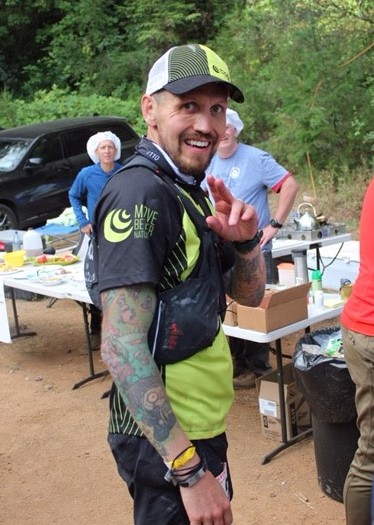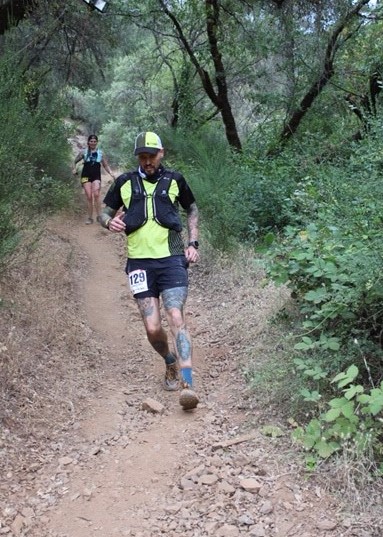The Western States 100-Mile Endurance Run is the world’s oldest 100-mile trail race. Starting in Squaw Valley, California near the site of the 1960 Winter Olympics and ending 100.2 miles later in Auburn, California, Western States, in the decades since its inception in 1974, has come to represent one of the ultimate endurance tests in the world. Runners climb more than 18,000 feet anf descend nearly 23,000 feet before they reach the finish line at Place High School in Auburn.
Topo Ambassador, Joseph Chick, shares with us his experience running Western States and the two Topo shoes that helped get him to the finish.
At arguably the biggest race of my life, I did something rather outside the norm for me. I lined up to the start of Western States in a pair of shoes that had only 35 miles on them and prior to those 35 miles, were a model I had never worn.
Normally I would never even think of doing something like that, but I had been dreaming of the MTN Racer since I had first heard of them. Right out of the box I knew they were the shoes I wanted to run in.
My confidence in them was rewarded in the first 40 miles of Western States when we passed over snow, ice, mud, trail debris (including countless rocks and roots) and plenty of downhill. My stride never faltered. The Vibram Megagrip outsole grabbed everything I stepped on as though I was standing on dry, smooth ground. I watched countless people slip and slide through the snow and mud in those early miles, yet I felt confident and comfortable in my new kicks.
Around mile 25 or so, the course took us through Duncan Creek, which given the snowpack on the west coast this year, was (not surprisingly) high. As in, nearly knee deep high and about a good 6-7 feet across. There was obviously no way to not get soaked. It was also freezing cold, which was somewhat refreshing, but it was still early enough in the race that heat wasn’t much of an issue yet. Again, the shoes grabbed the rocky bottom of the creek and held true, there was no slipping, even in the rushing water. What’s even better is how they handled the water once I was out of it and trudging back up the canyon trail. Despite the full immersion, there was still no slipping and they were draining very quickly with each step.
Unfortunately, my socks were not draining as well. At the next aid station where I met my crew, while changing my socks I swapped out my shoes to my tried and true long-distance shoes, the Ultraventures. This pair had about 100 miles on them and were my second pair of the model, so I was much more familiar with them. The MTN Racer are built on a similar platform to the Ultraventure so I think that’s part of why the MTN Racer felt so comfortable right out of the gate.
As anticipated, the combination of fresh, dry socks and the Ultraventures were exactly what my somewhat taxed legs and feet were begging for. I made the switch just in time for the somewhat famous “canyons” section of the course, which I had run during training camp but not on 40+ mile legs. I was definitely feeling the fatigue of the effort during those climbs and descents (which was compounded by my abridged training calendar due to injuries).
I grabbed my first pacer after a somewhat long rest and reboot at Foresthill and took off for what I had hoped would be an opportunity to make up some time on the somewhat gentle grade of the Cal Street trail. Slowly but surely, the miles clicked off toward the river crossing. Getting to the river was somewhat of a milestone for me mentally, as I would be picking up my wife who would run the last 20+ of the course and take me to the track. It was a long grinding night as I battled with and lost to nausea for most of the last 40 miles. I kept tabs on my watch and routinely checked my pace, all too aware that I was likely going to be chasing that golden hour finish.
As I inched closer to the Quarry Road aid station where I normally volunteer, I felt a surge of energy. I kicked up the pace as much as my exhausted legs would let me and was happy to see that I managed to get to a place that I should be able to almost walk it in and finish. Crossing no hands bridge and making the climb to Robbie Point was very emotional, as was the painfully slow and rigid shuffle through town where the locals cheered us on as we made our way through the streets and toward the track.
I don’t know that I’ve ever experienced anything like the emotions and the energy of circling that track. It simultaneously lasted forever and was over in a blink of an eye. My crew found me some shade to collapse in and the magnitude of 7 years of waiting finally hit me. I was a Western States finisher.
As I write this, it’s about a month later and I just finished a 50K race feeling pretty good. My feet had no issues from the wear and tear of 100 miles of snow, ice, mud, rocks, 20,000+ feet of descending and water crossings, which I attribute to my selection of shoes. I firmly believe the combination of the MTN Racer and the Ultraventures played a significant role in getting me from Squaw Valley to Auburn. I can’t wait to see where else they can take me.
Joseph Chick is a Program Director assisting Veterans and individuals with mental illness secure and maintain affordable housing and access services. He is married to his best friend and is the proud father of an amazing daughter who recently celebrated her 2nd birthday and ran her first trail race. Follow Joseph on Instagram at @josephchick.






Nice job Joseph! I hope to be in your shoes (pun intended) and run Western States myself soon.
I’m super pleased with my Terraventure 2s after xx pair of Altra 2.5s and then the 4.0s failing me. The traction IN water is important and the shoes drain quickly. I’m using them for canyoneering and swimming with hikes in. Traction on rock is good, sometimes I wear my Scarpa approach shoes for really steep stuff.